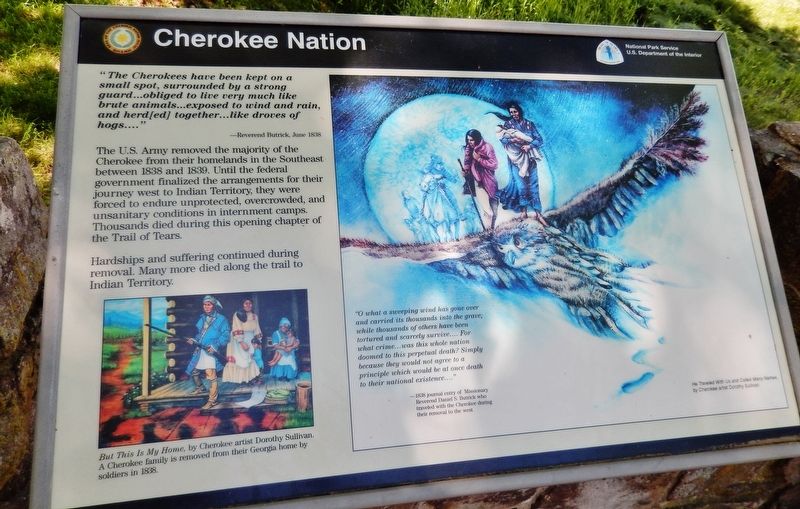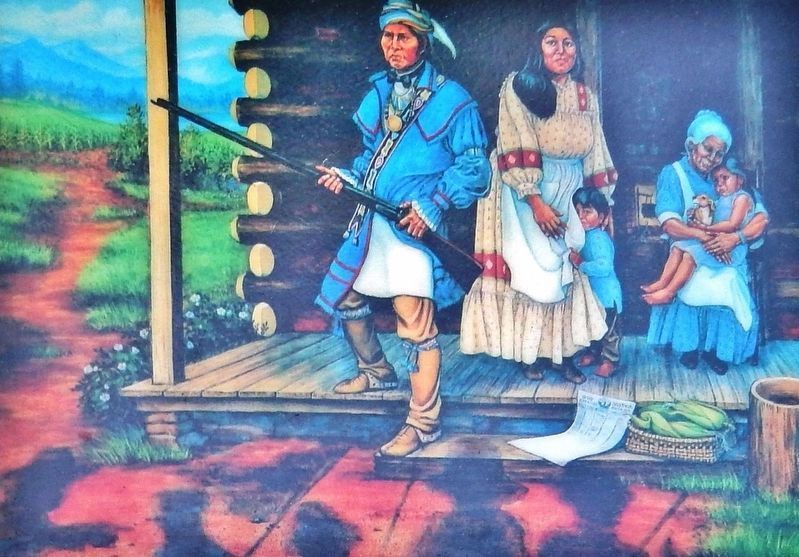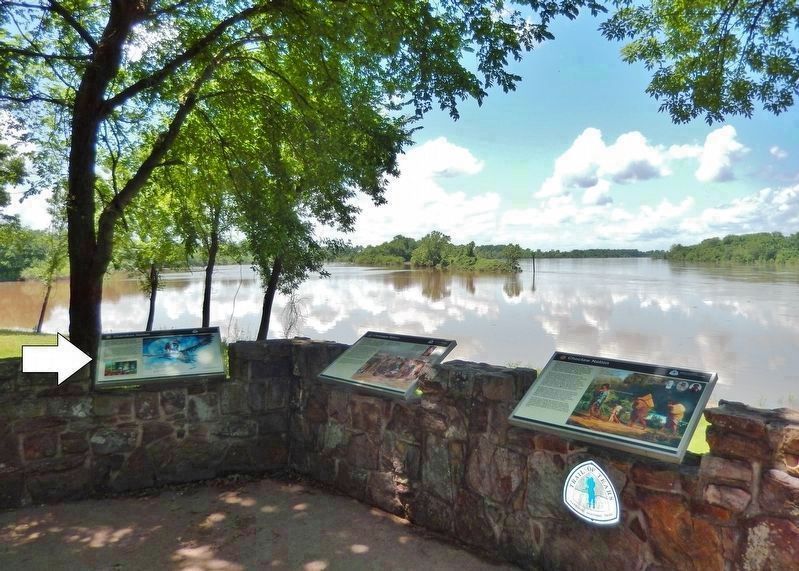Fort Smith in Sebastian County, Arkansas — The American South (West South Central)
Cherokee Nation
—Reverend Butrick, June 1838
The U.S. Army removed the majority of the Cherokee from their homelands in the Southeast between 1838 and 1839. Until the federal government finalized the arrangements for their journey west to Indian Territory, they were forced to endure unprotected, overcrowded, and unsanitary conditions in internment camps. Thousands died during this opening chapter of the Trail of Tears.
Hardships and suffering continued during removal. Many more died along the trail to Indian Territory.
"O what a sweeping wind has gone over and carried its thousands into the grave; while thousands of others have been tortured and scarcely survive… For what crime… was this whole nation doomed to this perpetual death? Simply because they would not agree to a principle which would be at once death to their national existence…"
—1838 journal entry of Missionary Reverend Daniel S. Butrick who traveled with the Cherokee during their removal to the west
Erected by National Park Service, U.S. Department of the Interior.
Topics and series. This historical marker is listed in this topic list: Native Americans. In addition, it is included in the Trail of Tears series list. A significant historical year for this entry is 1838.
Location. 35° 23.261′ N, 94° 26.001′ W. Marker is in Fort Smith, Arkansas, in Sebastian County. Marker can be reached from the intersection of Parker Avenue and South 3rd Street. Marker is located on the Fort Smith National Historic Site grounds, near Belle Point on the west side of the fort, overlooking the Arkansas River. Touch for map. Marker is at or near this postal address: 301 Parker Avenue, Fort Smith AR 72901, United States of America. Touch for directions.
Other nearby markers. At least 8 other markers are within walking distance of this marker. Chickasaw Nation (here, next to this marker); Choctaw Nation (a few steps from this marker); Muscogee (Creek) Nation (a few steps from this marker); Seminole Nation (a few steps from this marker); Request Denied (within shouting distance of this marker); Osage Nation (about 300 feet away, measured in a direct line); Abandoned and Forgotten (about 300 feet away); Establishing Fort Smith (about 300 feet away). Touch for a list and map of all markers in Fort Smith.
More about this marker. A Trail of Tears National Historic Trail interpretive site.
Also see . . .
1. Cherokee History. In the 1830’s, gold was discovered in Georgia. The settlers began to covet the Cherokee homelands, and a period of Indian Removals began to make way for more white settlement. In 1838, thousands of Cherokee men, women and children were rounded up and marched 1,000 miles to Indian Territory, known today as the state of Oklahoma. (Submitted on October 2, 2020, by Cosmos Mariner of Cape Canaveral, Florida.)
2. Cherokee Nation History. Cherokees, intermarried whites and even slaves were summarily rounded up and placed into more than a dozen stockades to await their departure. It’s estimated that 16,000 Cherokees eventually were forced to undertake the six to seven month journey to “Indian Territory” in the land beyond Arkansas. Between the stockades, starvation and sickness, and the harsh winter conditions, some 4,000 Cherokees perished, never reaching their new land. (Submitted on October 1, 2020, by Cosmos Mariner of Cape Canaveral, Florida.)
Credits. This page was last revised on October 2, 2020. It was originally submitted on September 28, 2020, by Cosmos Mariner of Cape Canaveral, Florida. This page has been viewed 273 times since then and 31 times this year. Photos: 1, 2, 3, 4. submitted on October 1, 2020, by Cosmos Mariner of Cape Canaveral, Florida.



